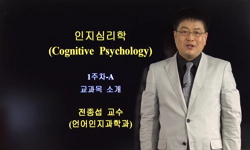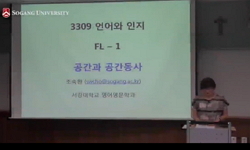목적 : 본 연구의 목적은 안구운동이 동반된 주의력 훈련이 인지장애가 있는 뇌손상 환자의 주의력 및 인지 능력 회복에 긍정적인 영향을 미치는 효과를 알아보기 위한 예비연구이다. 연구...
http://chineseinput.net/에서 pinyin(병음)방식으로 중국어를 변환할 수 있습니다.
변환된 중국어를 복사하여 사용하시면 됩니다.
- 中文 을 입력하시려면 zhongwen을 입력하시고 space를누르시면됩니다.
- 北京 을 입력하시려면 beijing을 입력하시고 space를 누르시면 됩니다.
부가정보
국문 초록 (Abstract)
목적 : 본 연구의 목적은 안구운동이 동반된 주의력 훈련이 인지장애가 있는 뇌손상 환자의 주의력 및 인지 능력 회복에 긍정적인 영향을 미치는 효과를 알아보기 위한 예비연구이다. 연구방법 : 인지장애가 있는 뇌손상 환자 7명에게 16주 동안 총 48회 안구운동이 동반된 주의력 훈련을 집 중적으로 실시하였다. 중재 도구는 안구추적 연동형 주의력 훈련시스템인 컴퓨터 기반 인지재활 프로그 램(Eye-tracking & ear system based Attention training System; EYAS)을 적용하였다. 중재 전후 인지능력의 변화를 알아보기 위하여 한국형 간이 정신상태검사(Mini-Mental State Examination for Korean; MMSE-K), 전산화 신경인지기능검사(Computerized Neuro-cognitive function Test; CNT), 운동시지각검사(Motor-free Visual Perception Test; MVPT)를 실시하였다. 결과 : 안구추적 연동형 주의력 훈련시스템으로 안구운동이 동반된 주의력 훈련을 참가자에게 중재 프로그 램으로 적용한 후 주의력, 정보처리속도, 기억력 및 시지각이 향상되었다. 아이어스 중재 전보다 중재 후 MVPT 평균점수가 높았다(p<.01). MMSE-K 역시 평균 점수가 향상 되었다. 시각 주의력과 정보처리 속도에서 효과를 알아본 결과 CNT의 VCPT(Visual Continuous Performance Test)(p<.05)와 VCCPT(Visual Controlled Continuous Performance Test)(p<.01)에서 중재후가 중재전보다 평균점 수가 높았다. 아이어스가 기억력에 긍정적인 영향을 미친다는 것을 CNT 평가를 통해 알 수 있었는데 CNT의 VST(Visual Span Test)(p<.01)와 DST(Digit Span Test)(p<.05)에서 평균점수가 향상되었 다. 중재 후 VST 역순 검사에서는 평균값 상승이 있었고, DST 역순 검사에서는 중재 전후 평균값에서 유의한 차이를 보였다(p<.05). 결론 : 안구운동이 동반된 주의력 훈련은 인지저하가 있는 뇌손상 환자의 주의력, 정보처리 속도, 시지각, 기억력 향상에 긍정적인 영향을 준다는 가능성을 알 수 있었다. 안구운동은 주의력과 관련성이 있고, 주 의력의 향상은 다른 인지능력에 긍정적인 영향을 줄 수 있다. 향후 연구에서는 구조화된 실험설계로 효 과검증을 실시할 필요가 있다.
다국어 초록 (Multilingual Abstract)
Objective: The purpose of study was to verify the clinical effect of a attention training with eye movement program(called EYAS) for recovering the attention and cognition in brain injury. Methods: For this purpose, 7 stroke and TBI with cognitive dis...
Objective: The purpose of study was to verify the clinical effect of a attention training with eye movement program(called EYAS) for recovering the attention and cognition in brain injury. Methods: For this purpose, 7 stroke and TBI with cognitive disabilities participated in a clinical experiment to verify the effect of attention training with eye movement program. The intervention tool was the eye tracking-linkaged attention training system(EYAS) which is computer–based cognitive rehabilitation program. All participant were evaluated with four standardized assessment tools(MMSE-K, MVPT, CNT) before, middle, after the planned intervention sessions. Cognitive interventions were intensively carried out for 16weeks, half an hour per session, 3 times a week. Results: The results were as follows. Three intervention periods for MVPT and CNT showed differences in cognitive abilities after the interventions as expected. The attention, response speed, memory, visual perception were improved significantly compared to before intervention. The cognition(MMSE-K, MVPT, CNT) scores after EYAS interventions were higher than before it's interventions. Conclusion: These results indicate that the attention training with eye movement program have effects on improving cognitive abilities(memory, visual perception) and response speed in brain injury patients. Further studies are needed to verify the effect on various group and more participants(ex, child).
목차 (Table of Contents)
- 국문초록
- Ⅰ. 서론
- Ⅱ. 연구 방법
- 1. 연구대상 및 기간
- 2. 연구도구 및 방법
- 국문초록
- Ⅰ. 서론
- Ⅱ. 연구 방법
- 1. 연구대상 및 기간
- 2. 연구도구 및 방법
- 3. 연구 절차
- 4. 분석방법
- Ⅲ. 연구 결과
- Ⅳ. 고찰
- Ⅴ. 결론
- References
- Abstract
참고문헌 (Reference)
1 이희령, "한국 작업치료의 인지재활 실태 조사" 대한작업치료학회 20 (20): 73-84, 2012
2 전선희, "인지장애아용 소프트웨어(THINKable/DOS) 활용이 학습장애 유아의 주의결함에 미치는 영향"
3 이정모, "인지심리학" 학지사 2003
4 Mall, J. T., "Visual selective attention is equally functional for individuals with low and high working memory capacity: Evidence from accuracy and eye movements" 76 : 1998-2014, 2014
5 DeSchepper, B., "Visual memory for novel shapes: Implicit coding without attention" 22 (22): 27-47, 1996
6 Zagavec, B. S., "Training of selective attention in work-active stroke patients" 38 : 370-372, 2015
7 Kim, Y. G., "The evaluation on clinical applicability and validation for eye trackinglinkaged attention training system" 6 (6): 5-23, 2017
8 Hutton, S. B., "The effects of dividing attention on smooth pursuit eye tracking" 163 : 306-313, 2005
9 Rock, I., "The effect of inattention on form perception" 7 : 275-285, 1981
10 Duncan, J., "The MIT encyclopedia of the cognitive sciences" The MIT Press 39-41, 2001
1 이희령, "한국 작업치료의 인지재활 실태 조사" 대한작업치료학회 20 (20): 73-84, 2012
2 전선희, "인지장애아용 소프트웨어(THINKable/DOS) 활용이 학습장애 유아의 주의결함에 미치는 영향"
3 이정모, "인지심리학" 학지사 2003
4 Mall, J. T., "Visual selective attention is equally functional for individuals with low and high working memory capacity: Evidence from accuracy and eye movements" 76 : 1998-2014, 2014
5 DeSchepper, B., "Visual memory for novel shapes: Implicit coding without attention" 22 (22): 27-47, 1996
6 Zagavec, B. S., "Training of selective attention in work-active stroke patients" 38 : 370-372, 2015
7 Kim, Y. G., "The evaluation on clinical applicability and validation for eye trackinglinkaged attention training system" 6 (6): 5-23, 2017
8 Hutton, S. B., "The effects of dividing attention on smooth pursuit eye tracking" 163 : 306-313, 2005
9 Rock, I., "The effect of inattention on form perception" 7 : 275-285, 1981
10 Duncan, J., "The MIT encyclopedia of the cognitive sciences" The MIT Press 39-41, 2001
11 Posner, M. I., "The MIT encyclopedia of the cognitive sciences" The MIT Press 43-46, 1999
12 Seya, Y., "Spatial attention and reaction times during smooth pursuit eye movement" 74 : 493-509, 2012
13 Suzanne, L. BC., "Reducing attention deficits after stroke using attention process training: A randomized controlled trial" 40 : 3293-3298, 2009
14 Najemnik, J., "Optimal eye movement strategies in visual search" 434 : 387-391, 2005
15 Jeter, C. B., "Novel n-back spatial working memory task using eye movement response" 43 : 879-887, 2011
16 Kwon, Y. C., "Korean version of Mini-Mental State Examination(MMSE-K) part I: Development of the test for the elderly" 28 (28): 125-135, 1989
17 Theeuwes, J., "Interactions between working memory, attention and eye movements" 132 : 106-114, 2009
18 Hill, N. L., "Feasibility study of an attention training application for older adults" 10 : 241-249, 2015
19 Nelles, G., "Eye-movement training-induced plasticity in patients with post-stroke hemianopsia" 256 : 726-733, 2009
20 Huestegge, L., "Eye movements as a gatekeeper for memorization: evidence for the persistence of attentional sets in visual memory search" 76 : 270-279, 2012
21 Lee, J. B., "Evaluation of attention training and metacognitive facilitation to improve reading comprehension in aphasia" 22 : 318-333, 2013
22 Winkens, I., "Efficacy of time pressure management in stroke patients with slowed information processing: A randomized controlled trial" 90 : 1672-1679, 2009
23 Baumann, O., "Effects of attention to auditory motion on cortical activations during smooth pursuit eye tracking" 4 : e7110-, 2009
24 Mazer, B. L., "Effectiveness of a visual attention retraining program on the driving performance of clients with stroke" 84 : 541-550, 2003
25 Kapoula, Z., "EMDR effects on pursuit eye movements" 5 : e10762-, 2010
26 Moore, T., "Control of eye movements and spatial attention" 98 : 1273-1276, 2001
27 Bogdanova, Y., "Computerized cognitive rehabilitation of attention and executive function in acquired brain injury: A sysmatic review" 31 : 419-433, 2016
28 Bottcher, S. A., "Cognitive retraining: A nursing approach of the brain injured" 24 (24): 193-208, 1989
29 Sternberg, R. J., "Cognitive psychology" Thomson Learning 2003
30 Kim, Y. H., "Cognitive assessment for patient with brain injury by computerized neuropsychological test" 25 : 209-216, 2001
31 Banich, M. T., "Cognitive Neuroscience" 2014
32 Johnson, A., "Attention theory and practice" Sage Publications 2004
33 Donahue, C. B., "Attention process training with a community-based sample of individuals with traumatic brain injuries" Walden University 2004
34 Oh, M. A., "A study on the cognitive function by MMSE in the urban elderly" 30 : 101-113, 2003
35 Wolinsky, F. D., "A randomized controlled trial of cognitive training using a visual speed fo processing intervention in middle aged and older adults" 8 : e61624-, 2013
동일학술지(권/호) 다른 논문
-
- 대한작업치료학회
- 한대성
- 2018
- KCI등재
-
복합중재 프로그램이 경도 알츠하이머병 치매환자의 인지기능 및 도구적 일상생활수행능력에 미치는 영향
- 대한작업치료학회
- 함민주
- 2018
- KCI등재
-
- 대한작업치료학회
- 임경민
- 2018
- KCI등재
-
라쉬분석을 이용한 학령기 아동을 위한 활동 참여 평가도구 (Activity Participation Assessment)의 타당도
- 대한작업치료학회
- 김세연
- 2018
- KCI등재
분석정보
인용정보 인용지수 설명보기
학술지 이력
| 연월일 | 이력구분 | 이력상세 | 등재구분 |
|---|---|---|---|
| 2027 | 평가예정 | 재인증평가 신청대상 (재인증) | |
| 2021-01-01 | 평가 | 등재학술지 유지 (재인증) |  |
| 2019-03-01 | 학술지명변경 | 외국어명 : Journal of Korean Society of Occupational Therapy -> Korean Journal of Occupational Therapy |  |
| 2018-01-01 | 평가 | 등재학술지 유지 (등재유지) |  |
| 2015-01-01 | 평가 | 등재학술지 유지 (등재유지) |  |
| 2011-01-01 | 평가 | 등재학술지 유지 (등재유지) |  |
| 2008-01-01 | 평가 | 등재학술지 선정 (등재후보2차) |  |
| 2007-01-01 | 평가 | 등재후보 1차 PASS (등재후보1차) |  |
| 2005-01-01 | 평가 | 등재후보학술지 선정 (신규평가) |  |
학술지 인용정보
| 기준연도 | WOS-KCI 통합IF(2년) | KCIF(2년) | KCIF(3년) |
|---|---|---|---|
| 2016 | 0.78 | 0.78 | 0.83 |
| KCIF(4년) | KCIF(5년) | 중심성지수(3년) | 즉시성지수 |
| 0.84 | 0.86 | 0.929 | 0.12 |




 eArticle
eArticle 코리아스칼라
코리아스칼라






